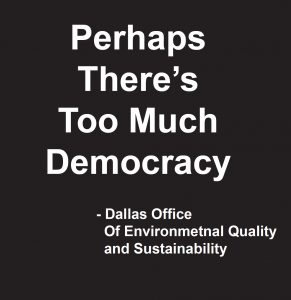Citizen Science
“SharedAirDFW” is DFW’s New Regional Air Quality Monitoring Network
Monitors are being assembled.
Software is being written.
Community meetings are happening.
Downwinders is helping build the region’s
first 21st-Century Air Network
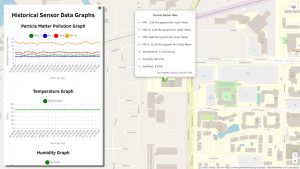
The first images from the mapping app UTD students are building for the new SharedAirDFW Air Quality Monitoring Network. Here data is being received by monitors already installed on the UTD campus. Residents will be able not only to see current conditions but levels over the last 24 hours or more.
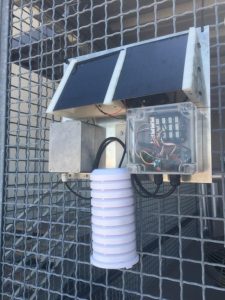
One of the over 100 new SharedAirDFW air quality monitors being built in the UTD laboratory that will be distributed throughout DFW, including Joppa, West Dallas, Southern Dallas, and Midlothian.
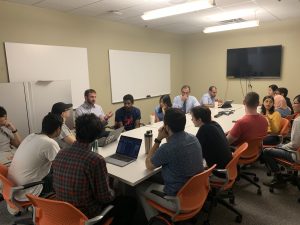
UTD students working with Downiwnders’ consultant Robert “the map” Mundinger on the SharedAirDFW mapping app software and interface.
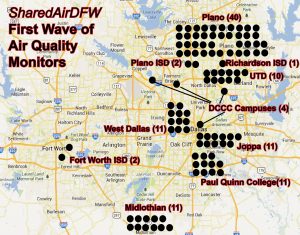
By this time next year the Network plans on having over its first 100 air quality monitors distributed throughout DFW, including the “front line” communities of Joppa, West Dallas, Southern Dallas and Midlothian.
____________________________________
Real Time Air Quality Information is Coming to DFW
It’s taken years of work and a lot of patience but with any luck a new citizen-friendly regional air monitoring network will debut in 2020.
Under the working title of “SharedAirDFW” over 100 new custom-built air quality monitors are being distributed throughout the DFW region in the next 12 months that will be able to give residents real time information about the air they breathe for the first time. When it’s up and running, it’ll be the first network of its kind in Texas and one of the largest in the U.S.
Based out of the University of Texas at Dallas laboratories and fueled by its graduate students, as well as Downwinders’ grant monies, these monitors will offer real time information through a easily accessible app.
Right now a handful of official EPA monitors provide air quality readings up to one or two hours behind real time conditions. SharedAirDFW willl increase the number of calibrated air quality monitors in DFW by a factor of four while giving readings updated every few seconds.
Almost half of the new monitors are going to front line communities in the DFW area: 33 monitors purchased by Downwinders are going to Joppa, West Dallas, and Midlothian, while another 11 purchased by Paul Quinn College are slated for the Southern Dallas neighborhoods surrounding its campus.
Joppa residents will get a preview of the system at a December 5th community roll out involving UT researchers, Habitat for Humanity, Paul Quinn, and local elected officials. Community events in Midlothian and West Dallas will follow.
This is one of the most important projects Downwiders has helped birth in its 25 year history. We’ll be bringing you updates as we get closer to bringing the whole system online. Thanks for you support.
Update: A 21st Century Regional Air Monitoring Network for DFW is On Its Way
 me technical and bureaucratic hitches, momentum is starting to build toward the 2020 operation of a true 21st Century DFW regional air quality monitoring network.
me technical and bureaucratic hitches, momentum is starting to build toward the 2020 operation of a true 21st Century DFW regional air quality monitoring network.
A small army of University of Texas at Dallas graduate students are assembling over 100 solar-powered wireless air monitoring units to be dispersed throughout the metro area. A third of those have been purchased by Downwinders for placement in Joppa, West Dallas, and Midlothian. 40 or more or going to Plano. Three Dallas County Community College campuses are receiving one, along with the Fort Worth and Richardson school districts.
And now news has come that Paul Quinn College has received an EPA grant to purchase 11 of these monitors for placement around its Southern Dallas campus. Downwinders is working to coordinate the location of its Joppa area monitors with Paul Quinn to provide Southern Dallas with its own mini-network of monitors.
Meanwhile another group of UTD students are working on the mapping software and app residents will be able to use to access the data in real time. They’re being led in this effort by Robert “The Map” Mundinger, who Downwinders hired for the job. All in all, Downwinders has now invested almost $50,000 in this network, which we hope will become a model for the rest of Texas and the nation.
Downwinders Board Members Power DISD Middle School Summer Science Program on Air Quality
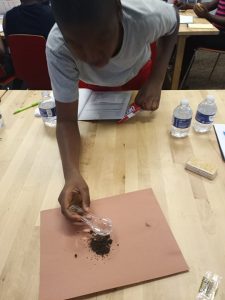 Thanks to two industrious board members, Downwinders at Risk has partnered with Dallas Independent School Districts’ Kids University in a six-week summer program to immerse middle school students in citizen science and air quality.
Thanks to two industrious board members, Downwinders at Risk has partnered with Dallas Independent School Districts’ Kids University in a six-week summer program to immerse middle school students in citizen science and air quality.
Our “STEAM Ahead” series features approximately fourteen young researchers using Downwinders’ inventory of portable air quality monitors to collect data along DART bus routes in Dallas, analyze that data, and decide what to do about any problems with air quality they discover. Classroom sessions teach about Particulate Matter pollution and its dangers. Class began on June 13th and meets every Thursday until July 25th.
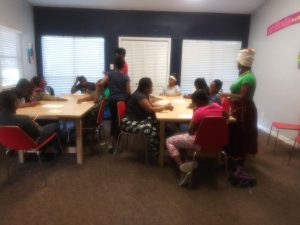 Downwinders at Risk Board Members Cresanda Allen and Misti O’Quin designed the curriculum, gathered all the material, and helped recruit students. Cresanda is a professional teacher and Misti is the Beyond Coal Organizer for DFW. Their goal is to increase knowledge about environmental health & justice issues among middle school youth as well as distributing the scientific tools for evaluating the conditions around them.
Downwinders at Risk Board Members Cresanda Allen and Misti O’Quin designed the curriculum, gathered all the material, and helped recruit students. Cresanda is a professional teacher and Misti is the Beyond Coal Organizer for DFW. Their goal is to increase knowledge about environmental health & justice issues among middle school youth as well as distributing the scientific tools for evaluating the conditions around them.
This is the first time Downwinders has offered a summer class for youth in its 25-year history. Students will be evaluated at course end and if the pilot program is deemed a success, look for Cresanda and Misti to be back in action in 2020.
Downwinders Wins Prestigious Ben and Jerry’s Foundation Grant to Help Build New DFW Air Quality Monitoring Network

Downwinders at Risk is excited to announce that we won a $20,000 Ben & Jerry’s Foundation grant to help add high-tech, low-cost air quality sensors to our growing community air network powered by the expertise and hardware of the University of Texas at Dallas.
While we applied in the past for these prestigious national grants, this is the first time we’ve received one. It’s kind of a big deal for us.
Our winning grant proposed combined old-fashioned community organizing with the installation and maintenance of new solar-powered, wifi-connected Particulate Matter monitors. Real time information from those monitors will be accessible through a free app you can download on your phone. This information can be used to propel a variety of public health and public policy initiatives.
Depending on how much of a bulk discount we can get, the grant should be able to buy at least 20-30 additional more monitors to add to the 11 we’ve already ordered. Our plan is have all of these up and operating by this time next year.
Dallas’ Joppa neighborhood will get the first wave of these. We’re already finding locations for them in the community. We’re beginning discussion with West Dallas community leaders to bring at least as many or more monitors to that abused part of town as well.
Residential communities adjacent to or directly downwind of major PM pollution sources are the first priority, but we hope to keep expanding to make the network as comprehensive as possible. There are plans to begin assembling a community air network board or committee of some type to oversee the Network. Stay tuned.
“Build-A-Better Bus Stop” Design Contest Winner To be Decided This Saturday
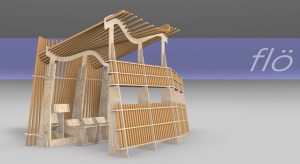
Better Bus Stop Design
Competition Finals
This Saturday May 4th
6 – 9 pm
Better Block Foundation HQ
700 West Davis
Look, Judge, Vote.
Downwinders at Risk is one of this year’s contest sponsors because it’s all about building a more people-friendly bus stop that’s also trying to minimize riders’ exposure to street level Particulate Matter pollution (PM.) Better Block was inspired to tackle this problem via its collaboration with Downwinders at Risk back in December on our Electric Glide Pub Crawl. This is a great example of how simply talking more about PM pollution can trigger a cascade of unintended beneficial effects.
Better Block gave 11 teams $250, four hours on their CNC router (basically, a giant printer for wood), and freedom to create whatever they want, as long as it’s a bus stop. Nine teams made 90 second videos on their designs you can see at the bottom of Better Block’s home page. They include a local couple, a Boston collective, Dallas’ own City Lab High School and UTA grads.
On Saturday those teams will actually build their prototypes at Better Block headquarters on West Davis. They’ll have judges determine a winner, but the public can also pick its favorite stop. Live Music and food trucks on site. Come and see the future while you wait for election returns.
Dallas Staff Attempts COG Coup on Air Monitoring Network
After being rebuffed by its own city council on the idea, Dallas Staff Goes to NCTCOG to promote autocratic regional air monitoring network
You may remember that way back last September members of the Dallas City Council Quality of Life Committee approved a independent regional air network as laid out in a 20 minute presentation by the University of Texas at Dallas’s Dr. David Lary and Downwinders’s Director Jim Schermbeck. They approved it 7-0 with even Rickey Callahan voting for it.
Usually when things get voted that favorably out of a Committee, they head straight to the full Council and get approved. But moments after the Committee vote City Staff demanded it not be sent to the full Council until December.
Everyone who knew the backstory of how much the Dallas Office of Environmental Quality and (Rockefeller) Sustainability hated the idea of such a network knew what was really going on. And sure enough, here it is April and there’s still no movement on the one regional network idea officially endorsed by a City Council Committee.
But guess what? Staff isn’t just standing still. No, they’re on the move. They’re not only going out of their way to shoot down the air monitoring network approved by members of their own the city council; they’re going out of their way to ignore the Dallas City Council all together and take their case for a more autocratic, less public network to the North Central Texas Council of Governments, or “COG.”
Not satisfied with allowing the worst environmental justice crisis since West Dallas to explode into Shingle Mountain during his watch, OEQ&(R)S’s James McQuire is now out to make sure Dallas residents never get a chance to make decisions about monitoring air quality in their own backyard.
Why? Because as one Dallas staffer put it, “too much participation by the public can be a bad thing.” McQuire and Company want a monitoring network staff can control without citizen participation or accountability, in other words the Status Quo. But of course the status quo has failed spectacularly to address both the region’s old, and new air pollution problems. UTD and Downwinders are proposing a model with heavy doses of public participation and representation.
So last month, McQuire submitted a request to COG to ignore what his own Dallas city council committee had endorsed, and instead start from scratch to build a less-democratic, more staff-driven network that would be run by the same agency that for years denied the Midlothian cement plants had any impact on DFW air quality. He did this OVER THE OBJECTIONS of Quality of Life Chair Sandy Greyson, who has a healthy skepticism of CO’s abilities to look out for Dallas’ interests.
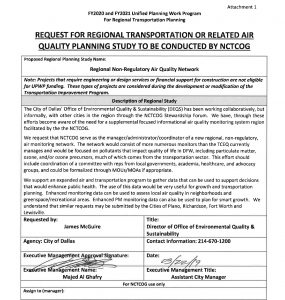 Like members of the Dallas Citizens Council who to make an end run around the City Council to get their own pet projects funded – see the VisitDallas headquarters slated for the new extension of Kyle Warren Park that is now being pimped by COG’s Director Michael Morris – McQuire is now circumventing his own Council and seeking relief from a “regional” agency that has historically only looked at air quality as an obstacle to highway funding.
Like members of the Dallas Citizens Council who to make an end run around the City Council to get their own pet projects funded – see the VisitDallas headquarters slated for the new extension of Kyle Warren Park that is now being pimped by COG’s Director Michael Morris – McQuire is now circumventing his own Council and seeking relief from a “regional” agency that has historically only looked at air quality as an obstacle to highway funding.
So let that soak in – Dallas city staff is intentionally ignoring its elected city council and the only air monitoring approach that council is on record as supporting, and instead now backing its own more autocratic version which has never been voted on by council and in fact was rejected out of hand by council members when asked.
It would take a novel’s worth of history to make the full case of why the COG is a poor choice for any new serious clean air effort in DFW but let’s start with just fundamentals.
COG has never cared about air quality from a public health perspective. Ever. Any work it’s done or is doing now – including promotion of electric vehicles and other anti-smog measures – are aimed at keeping DFW out of “non-attainment status” with the Clean Air Act in order to keep getting precious federal highway money. As long as the dollars keep flowing, COG isn’t interested in taking on other kinds of air pollution besides smog, or doing research into how even routine levels of combustion pollution are harmful, or until this moment, shown any interest in doing the air monitoring other metro areas are now routinely engaged in.
This skewed perspective is reflected in the language of McQuire’s proposal to COG. It’s all about how this air monitoring network could be a boon to transportation planning and oh by the way, maybe be of some public health interest too.
Because it lacks a public health perspective and is run by a cabal of local governments and staff by way of committees 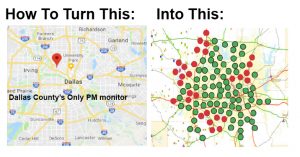 within committees, COG has been every bit as pro-active about bad air as the Dallas OEQ(R)S under McQuire, which is to say not a bit.
within committees, COG has been every bit as pro-active about bad air as the Dallas OEQ(R)S under McQuire, which is to say not a bit.
Downwinders spent years trying to convince COG leadership that three giant cement plants located in close proximity to each other in Midlothian, upwind of Dallas, and in eyesight of I-20 did in fact contribute to DFW smog. Despite spewing the equivalent of half a million cars worth of air pollution every year and being sited just across the Dallas and Tarrant county lines, the COG folks just didn’t get it – until Downwinders had to petition the EPA to bring those cement plants into DFW’s official smog plan itself. Those cement plants now have to be included in regional anti-smog plants but COG didn’t do that, citizens did.
When COG was writing its anti-smog plans, there were only two sides represented in it regional Clean Air Steering Committee: city staff and business. It took Downwinders to organize a collective boycott of this process until environmental groups were given seats at the table. COG didn’t do that, citizens did.
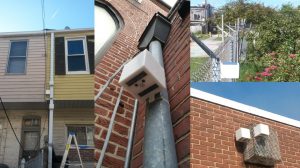 When fracking came to DFW, COG was as reluctant to point the finger at this huge source of new air pollution as it had been with the Midlothian cement plants. Why? Because local governments were benefactors of the Barnett Shale “boom” in tax revenues and drilling leases. COG steered clear from even acknowledging gas drilling as a significant air pollution problem and aligned with industry to dismiss concerns. It was up to local residents living next to drilling pads and compressor stations to write new rules for everything the drilling boom brought with it. Dallas residents wrote the most protective gas drilling rules in the state. COG didn’t do that, citizens did.
When fracking came to DFW, COG was as reluctant to point the finger at this huge source of new air pollution as it had been with the Midlothian cement plants. Why? Because local governments were benefactors of the Barnett Shale “boom” in tax revenues and drilling leases. COG steered clear from even acknowledging gas drilling as a significant air pollution problem and aligned with industry to dismiss concerns. It was up to local residents living next to drilling pads and compressor stations to write new rules for everything the drilling boom brought with it. Dallas residents wrote the most protective gas drilling rules in the state. COG didn’t do that, citizens did.
And if it had really been interested in air quality and air quality monitoring, the COG has had years to develop the idea and pursue it. It did not. Instead it was left up to non-profits like Downwinders and UTD to design and build a new approach to air monitoring. For over three years now this effort as been in the works and in fact James McQuire and his staff sat in on the meetings where the UTD model that was endorsed by his own council was drafted. He raised no objections at the time. Instead he waited until after the effort was finished and begin to sabotage it immediately from behind closed doors. Despite his best efforts at scuttling the proposal, the UTD model made it to Greyson’s committee and won a 7-0 vote. COG and Dallas OEQ(R)S didn’t do that. Citizens did.
And so now two of the region’s two most citizen-hostile entities are trying to team up and let COG do for Dallas air quality monitoring what it’s done to Dallas transportation policy – make it top heavy, unresponsive, undemocratic and staff controlled.
Like Greyson, Dallas County Commissioner Theresa Daniel is four-square against the COG idea and in favor of more public participation. Representing the largest local government entity involved, her opposition may keep McQuire’s effort from taking off despite his best bureaucratic efforts. And there’s also the May elections in Dallas to consider. A new council could have a lot more confidence in overriding staff proposals than the current one. And maybe that accounts for McQuire’s proposal arriving at COG now as well.
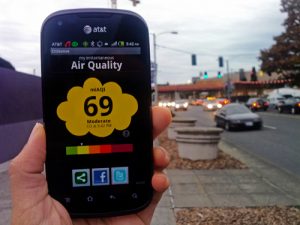
What really frustrating is that if McQuire and staff hadn’t begun his campaign to undermine the one approach that was favored by most of the entities involved, the Dallas city council would have already approved the UTD plan and we’d be on our way to building a truly independent monitoring network. Until Dallas staff objected last fall, there was a consensus about how to proceed. He’s single-handedly gutted that consensus, stifled all progress, and kept DFW way behind the air monitoring curve.
We’ll keep you up to date on how far this COG proposal gets, but Downwinders in Denton, Plano and Fort Worth should be on alert that McQuire is trying to get those cities on board with the COG approach as well. Please contact your most citizen-friendly council members and ask them not to support, what is in essence a staff coup in Dallas.
In the meantime, here’s one more question you can pose to Dallas council candidates this election season: “Do you support staff’s attempt to override the will of the council and impose a less public -friendly COG-run air monitoring network on Dallas, or the homegrown version proposed by UTD that’s already received a 7-0 vote?”
If this is going to get done right, citizens will have to do it.
San Antonio and Houston Move Forward with New Regional Air Monitoring Networks. Dallas Doesn’t.
Last time we reported on the prospects of a new regional air monitoring network the idea received a 7-0 vote from a Dallas City Council Committee on September 24th but was delayed by staff request from going to the council until December 12th.
There was conjecture at the time that the delay was an excuse to actually find ways to kill the idea and if that was the goal, it’s 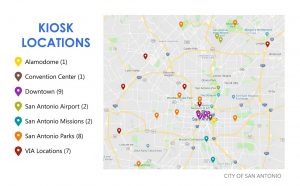 succeeding so far. After a year of hearing no objections from Dallas staff to the idea of establishing an independent entity among local governments to run the network, all of a sudden City Hall took great offense at the very idea.
succeeding so far. After a year of hearing no objections from Dallas staff to the idea of establishing an independent entity among local governments to run the network, all of a sudden City Hall took great offense at the very idea.
Over the past month Dallas County has been in talks with Dallas city staff to find another way to implement the network. Government-sponsored non-profits are being studied. Downwinders continues to advocate a entity that assures public participation in decision-making and robust enough to maintain a growing network of different monitors in different cities. Without more progress being made quickly it’s hard to figure out how the proposal makes it before the Council by December 12th.
While Dallas delays, both San Antonio and Houston are proceeding with their own new air monitoring networks.
In San Antonio, it’s through a deal with IKE Smart City that will trade ads on kiosks for 30 free kiosks that will give directions, recommend local eateries, provide free WiFi in a 150-foot radius, and take Particulate Matter pollution readings. The project is funded entirely by IKE Smart City. Unlike DFW, San Antonio hasn’t even violated the Clean Air Act and it already has more monitors than the Metromess.
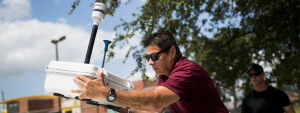 Beginning in December 2017 the Environmental Defense Fund working with the Houston Health Department and the university of California Berkley placed 20 air quality sensors across the city. Some were placed in known pollution hots spots like the predominantly black neighborhood of Pleasantville on Houston’s east side, where pollution from warehouses, metal recyclers, salvage yards, an Anheuser-Busch’s Houston brewery and an interstate often make it hard to breathe.
Beginning in December 2017 the Environmental Defense Fund working with the Houston Health Department and the university of California Berkley placed 20 air quality sensors across the city. Some were placed in known pollution hots spots like the predominantly black neighborhood of Pleasantville on Houston’s east side, where pollution from warehouses, metal recyclers, salvage yards, an Anheuser-Busch’s Houston brewery and an interstate often make it hard to breathe.
“If somebody asked me how many fixed site monitors we need, I would say there are never enough,” said Loren Raun, chief environmental officer with the Houston Health Department, which has since received funding to purchase similar instruments from Entanglement Technologies.
One can’t imagine anyone on Dallas city staff saying the same thing. In fact on more than one occasion staff has said they’re just fine with the nine monitors the Texas Nature Conservancy is due to be installing at Dallas schools this year and they’re in no rush to add any more.

Just another day in Joppa
And one especially can’t imagine Dallas city staff going along with putting monitors in known Dallas pollution hot spots like Joppa or West Dallas. Despite the recent controversy over the proposed two new batch plants rejected by the City Council in March – in part because of portable monitor readings from Downwinders showing already high levels – staff said recently they still have no plans to purchase their own air sensors.
This kind of official rebuff to high tech low cost sensors gives lie to the city staff’s rhetoric about “Smart Cities”as well as its sudden concern over asthmatic black kids. If staff really cared about them, why wouldn’t it buy air monitors it could use in field to investigate complaints in their neighborhoods instead of just guessing the air quality there, or using an EPA monitor nine miles away to claim everything was just fine? Why wouldn’t the City be rushing to install monitors in hots spots like Joppa? Because statements made in pursuit of Rockefeller Foundation grants do not carry the force of law, or even as it turns out, curiosity.
Al Armendariz, Graham Dodds, and Brett Shipp Take an Electric Bus to a Bar: 2019 Root and Branch Preview
Every year Downwinders at Risk takes a week off and sponsors a floating conference aimed at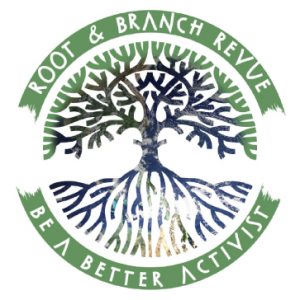 making North Texas organizers and activists better advocates.
making North Texas organizers and activists better advocates.
This year’s Root and Branch Revue is again packed with star power and covers new ground. Here’s your first preview of what’s being offered.
Mark you calendars now. These events are for people exactly like you.
Wednesday/December 5th
Why Does Green Look So White in DFW?
A Discussion from the South Side of the River
7 to 9 pm
African American Museum in Fair Park Dallas
FREE
Featuring:
Al Armendariz, Former EPA Regional Administrator
Cherelle Blazer, Sierra Club/Beyond Coal
Clarice Criss, Field Manager, Color of Change
…and others
Co-sponsor: Sierra Club/Beyond Coal
—————————————-
Thursday/December 6th
Electric Glide Bus Pub Crawl
How Electric Buses Can Save Profits, People, and the Planet
6-8:30 pm
Start: The Green Door in the Farmers Market Dallas
$25
Price Includes:
Custom Electric Glide Cocktails from The Green Door and Harwood Tavern
Pop-Up restaurant with food by Chef Graham Dodds
Presentation by E-bus manufacturer Proterra founder Don Hill
Co-sponsor: Climate 350
—————————————-
Saturday/December 8th
1-Day University of Change
A Full Day of Workshops to Help You Become a Better Advocate
10 am to 5:00 pm
GoodWork Co-Working Space 1808 S. Good Latimer Dallas
$25 Includes lunch and all these workshops….
“Mapping Injustice” with Robert “The Map” Mundinger
“Build Your Own Air Monitor” with Constant Marks
“Zoning 101” with Paul Cardin
“Investigative Research” with Brett Shipp
“Portable Air Monitor Training“ with the Downwinders PM Committee
“How to Stop a Batch Plant and Other ‘Standard’ Polluters” with David Frederick and Tamera Bounds
WITH MORE TO COME
Joppa Becomes Citizen Science Case Study; Next Portable Monitor Training Session Oct 28th

Shannon Gribble and Cresanda Allen on a monitoring run in Joppa
You’re Invited to Train on the Same Portable Monitors & Get Access to Our Monitor Lending Library…For FREE
CITIZEN SCIENCE TRAINING SESSION
SUNDAY OCTOBER 28th
1-3 pm
GOODWORK CO-WORKING SPACE
1808 S. GOOD-LATIMER
Let us know you’re coming: RSVP downwindersatrisk@gmail.com
Downwinders is proud to announce that our precedent-setting use of portable PM monitors to help Joppa residents defeat two proposed batch plants earlier this year was selected by manufacturer Aeroqual as a case study showing how its new air pollution technology has made a positive difference in the world.
Joppa will join other examples from places like Tanzania, Iraq, India, and Peru on the Aeroqual website. It will be the only success story attributable to a citizens group as opposed to a government agency, university, or business.
“Timing is everything” is a cliche but in this case the banality is on point.

Aeroqual’s new 500 series hand held portable PM monitors had only become available in January of this year, at exactly the time Downwinders was looking for a device that was highly reliable but not prohibitively expensive. In offering the 500, New Zealand-based Aeroqual carved its own market niche and met our criteria like a glove – more reliable than the extremely cheap consumer sensors you can buy on Amazon and less expensive than similarly calibrated machines affordable only to universities, industry and government.
Because they were so new, we had to call Aeroqual in New Zealand to order them directly. We were their first US customers. Downwinders ordered two for deployment in our PM Pollution Prevention campaign. When they arrived in late February, they were the only ones being used between New Zealand and the US.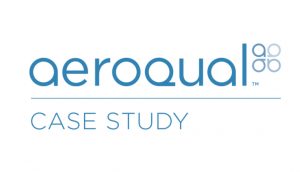
Since then, the company has made huge inroads into the US market, to the point of partnering with the EPA in Los Angles to establish a 100-monitor air network for Particulate Matter and smog pollution, and being considered for the monitor in the City of Dallas/Texas Nature Conservancy Breathe Easy study.
Downwinders’ original plan was to use the monitors to document PM levels along DART routes as research for our Green Streets bus electrification effort and set out for a couple of weeks doing nothing but measuring levels of PM inside and outside of buses.
We were still doing that when we got a call from the Joppa Freedman’s Township Association to request we turn our attention to their fight over two new batch plants.
Aeroqual’s portable machines provided the first, and so far only, air sampling in Joppa. They recorded significantly higher PM levels than the official EPA site some nine miles away. This was the same EPA site Dallas city staff was using to give Joppa the all-clear. The fact that the Aeroqual monitors came factory-calibrated out of the box and were supervised in their use by a local atmospheric scientist enhanced their credibility.
Their results were widely publicized only days before the City Council vote and combined with opposition on the ground, contributed to the council vote against the batch plant permits. It was the first time in local history, and we’re pretty sure in Texas or even the country, that this new technology became a tool for citizens in a successful permitting battle. And that’s why we’re ending up as the first citizens group case study for Aeroqual.
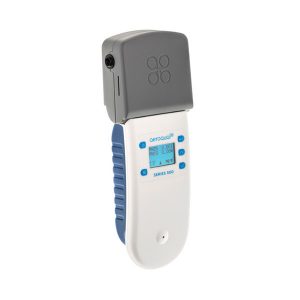
NOW IT’S YOUR TURN: MAKE HISTORY
CITIZEN SCIENCE TRAINING SESSION
SUNDAY OCTOBER 28th 1-3 pm
GOODWORK CO-WORKING SPACE
1808 S. GOOD-LATIMER
Let us know you’re coming: RSVP downwindersatrisk@gmail.com
This training session is a chance to become familiar with this new technology and work your way toward being able to check out these portable monitors on your own. No previous experience required. No math or engineering degrees necessary. If you can push buttons and read numbers, you can do this. It only takes two hours.

Along with first-timers, graduates from our first classes of Apprentice Citizen Scientists are invited back to take a field trip with our PM Committee and step-up to “Researcher” status. After one more outing, they’ll be given permission to check out the monitors for their own purposes or to help with our projects.
We’re entering a new era of Do-It-Yourself Environmental Protection. Learn how you can join it.
First Citizen Scientists Graduate From Portable Air Monitoring Training Class

L to R: Amanda Poland, Misti O’Quinn, Dr. Tate Barrett, James Orenstein, Temeckia Derrough, Candice Johnson, Evy Mayo, Jim Duncan, Kim Limberg, Liz Alexander, Miriam Mathews Fields and Cresanda Allen
In the middle of the wettest day in the wettest September DFW had ever recorded, the clouds parted and a dozen brave and curious souls turned out to go through the region’s first citizen science training for portable air monitoring.
Some were already clean air activists. Some were technology geeks. Some were people simply interested in having the ability to tell what’s in the air they’re breathing.
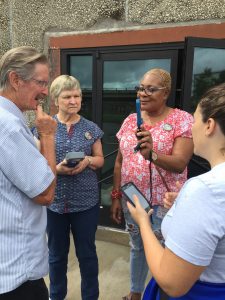 When they showed up to our GoodWork headquarters they got a tag team education on Particulate Matter pollution courtesy of a curriculum designed and presented by Downwinders board members and scientists. The information set-off lively discussions among residents of Joppa and West Dallas where PM problems are common. For others, the facts brought new awareness about this under-publicized but insidious pollutant.
When they showed up to our GoodWork headquarters they got a tag team education on Particulate Matter pollution courtesy of a curriculum designed and presented by Downwinders board members and scientists. The information set-off lively discussions among residents of Joppa and West Dallas where PM problems are common. For others, the facts brought new awareness about this under-publicized but insidious pollutant.
But no doubt many thought the real fun started with the hands-on field training using Downwinders’ three Aeroqual 500 Portable PM monitors. Despite the forecast, there was actually no rain during either the morning or afternoon session and the future scientists got to go explore inside and out.
They recorded the dust explosion set off by simply sweeping the floor with a broom. They saw how a lit match changed the composition of the air in a room. They stood downwind from fog machines that were faux-smokestacks for the day and they measured the ambient air in Sunny South Dallas on Good-Latimer. They learned how to sync meteorological tools with the monitors and record the necessary information to make a sampling more useful. They asked questions, they got in arguments and at the end of it all, they got certified as an official Citizen Science Apprentices. They’ll now be able to go out with our PM team for supervised research runs and after two of those they’ll be able to check out monitors on their own through our monitor lending library.
Our PM Committee is already looking to host another training session on a weekend in late October and these will be reoccurring on a regular basis from here on out. Be the first one on your block.

